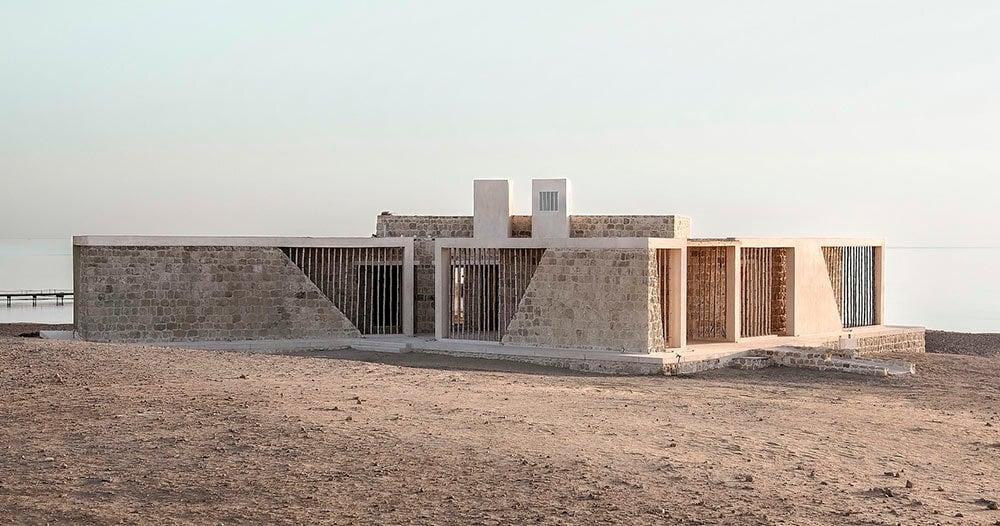a biophilic house by karm architecture lab (KAL)
Overlooking the shores of Marsa Alam, Egypt, this so-called Breathing House has been designed by Karm Architecture Lab (KAL). The work of contemporary architecture takes shape with a palette of natural materials including coral limestone and bamboo, and seems to emerge from the sandy terrain as a natural landform. The single-story three-bedroom family vacation home celebrates both the vast shoreline and the Red Sea beyond, offering a calm retreat along the edge of the Eastern desert. The design is informed by the climatic challenges of the region, thus emerging as a living entity that harmonizes with its natural environment.
The house is designed as a response to the area’s extreme climate, with summer temperatures sometimes rising to a scorching 50 degrees Celsius (120 degrees Fahrenheit). As the team’s environmental wisdom is rooted in the philosophies of biomimicry and biophilia, the architecture embodies a symbiotic relationship with its surroundings — adapting and reacting to climatic conditions to ensure the comfort of its occupants.
images © Farah Faheem, Hala Makhlouf
fossilized coral limestone: no two building blocks alike
As the Breathing House is crafted from the very bedrock it rests upon, Karm Architecture Lab (KAL) honors the ancient desert landscape once submerged beneath the Red Sea. Fossilized coral limestone, weathered and shaped over countless millennia, forms the sturdy load-bearing walls of the home. A sustainable building block expressive of the region’s legacy, the architects sourced this material from discarded rubble found near the site, eliminating the need for new excavations. The integration of this forgotten treasure reduced construction costs significantly, while inviting the skills of local craftsmen to foster community engagement.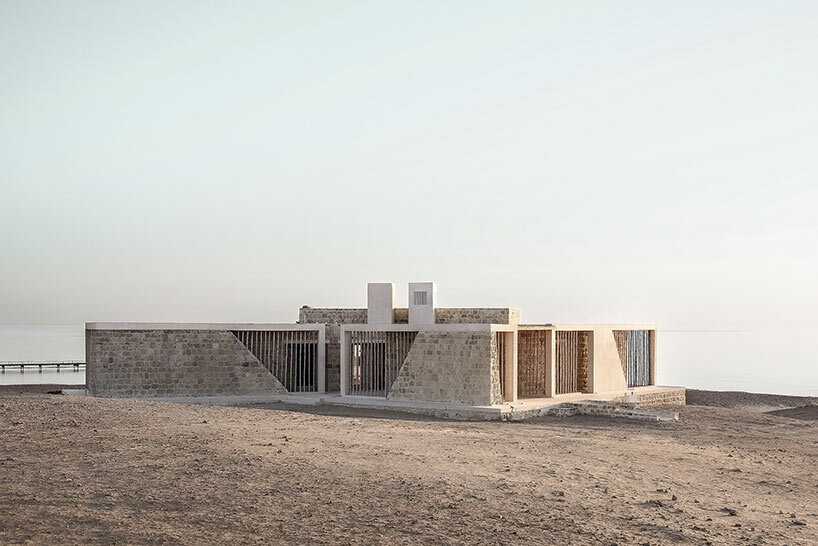
a living, breathing house
The heavy earthen walls of KAL’s Breathing House demonstrate a useful synergy with the environment. With thicknesses of 45-centimeters and 60-centimeters, the walls a capacity to absorb and release heat to create comfortable indoor temperatures. Their porous nature allows for a unique form of respiration, not unlike human skin perspiration, as they occasionally produce droplets of condensation when temperatures shift. Beyond their functional role, these walls are naturally adorned with preserved fossils of ancient sea life, expressing the desert’s history for generations to come.
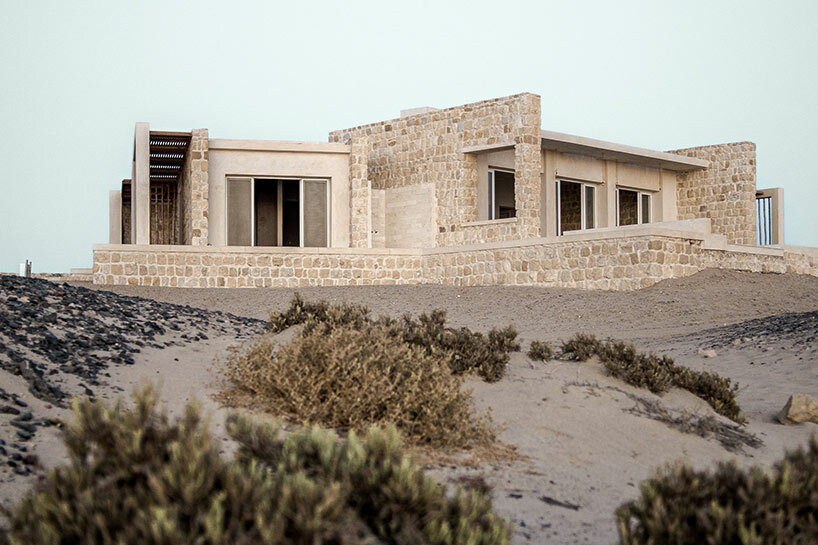
passive design to fight the desert heat
To combat the unrelenting desert sun, the Breathing House thoughtfully employs passive design strategies. A second skin of coral limestone and bamboo envelops the southern elevations of the home, akin to a protective shell sheltering desert creatures. This shield deflects the direct heat of the sun, preserving the cool interiors. The home’s orientation is informed by its surroundings, with its back entrance facing the sun while the sea-facing front embraces the Northern prevailing winds. Cantilevered roof slabs and strategically protruding walls further ward off excess heat, ensuring a temperate indoor environment even during the early hours.
The layout of the dwelling evokes a crab’s form, a floor plan which lends an interplay between the indoors and outdoors. Every interior space opens out with an unobstructed, 180-degree view of the Red Sea, while the compact yet porous plan integrates pockets of lush greenery. These spaces, soon to be filled with native plant-life, will become desert oases. In addition to these natural sanctuaries, the layout is cooled by cross-breezes invited through strategically positioned windows.
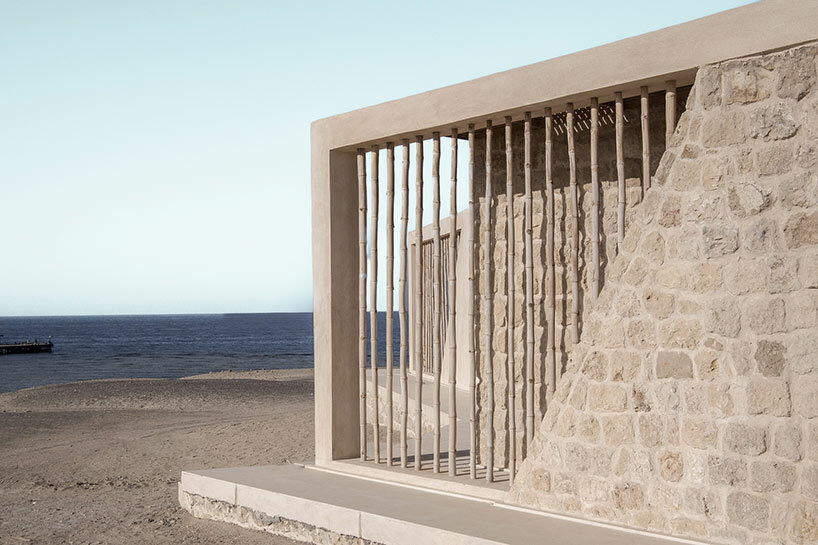
bamboo screens introduce a lightness to the otherwise heavy structure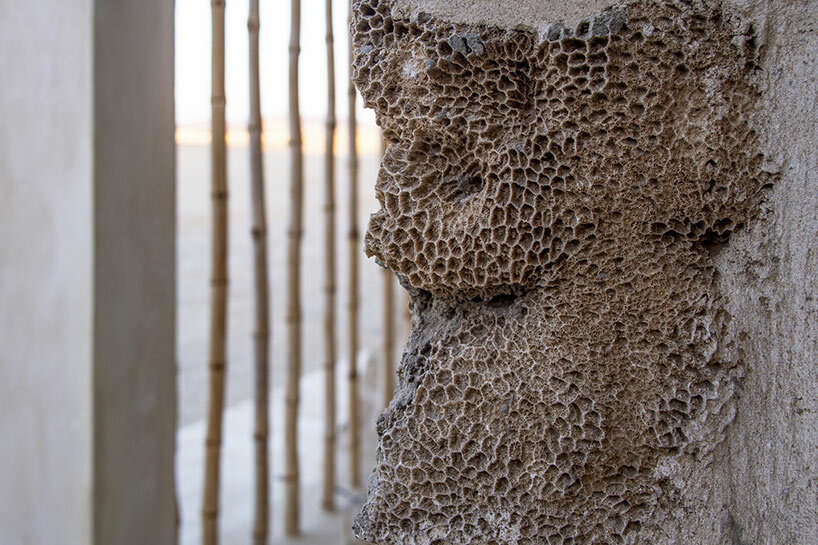
fossilized coral is celebrated as a natural and unique ornament
